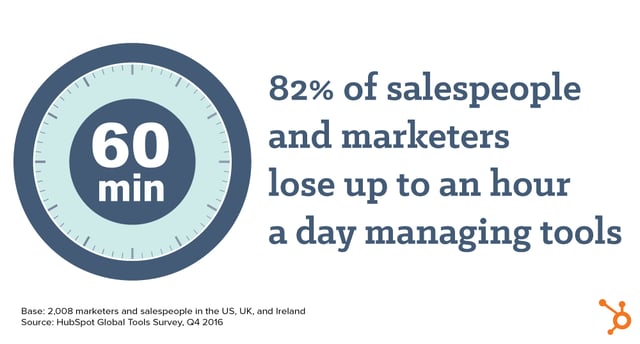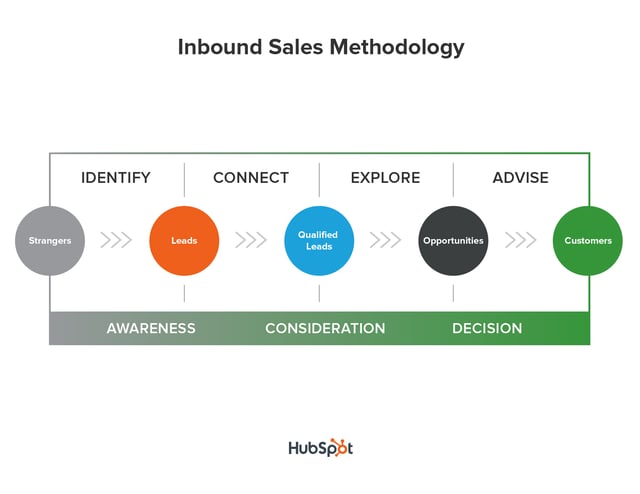
Essential Tools For Business Growth
A Complete Guide for Marketing, and Sales
Growth is the great equalizer.
But it takes tools and strategy to get there.
When you look at your marketing and sales objectives for this quarter, or this year, they require one core element: growth. But, how do we get from where we are today to our goals? And how do we achieve growth like Uber, Slack, Shopify, and Atlassian?
Whether you're in a hotly competitive market or have a blue ocean in front of you, both the strategy and the tools you use will pave the way toward achieving your objectives. But all too often, the conversation around growth starts with a consideration of tools instead of strategy.
.jpg)
Growth is never by mere chance; it is the result of forces working together.
James Cash Penney
Founder, JC Penney
We’re here to guide you through the process of selecting tools and choosing what is essential for your marketing, and sales teams. On this page, you’ll find a library of the best free tools and considerations when selecting a tool for any aspect of your business that fuels your growth. The guide covers everything from the essential technology your marketing and sales teams should use, to questions you should consider when selecting a technology.
Getting Started
How many tools do you use to accomplish your work? According to HubSpot research, 88% of marketers use up to 10 tools. Whether you realize it or not, all these tools may be costing you something far beyond just a subscription or licensing fee. In most cases, more tools means more time spent integrating, managing, and reporting from each of these various point solutions.
Regardless of the number of tools you use, the question remains: Does each one tie back to a specific business goal or challenge?

Drawing by Mayur Gupta
Having a website today is virtually a requirement of being in business. But can you definitively say that the CMS you use for your website is helping you solve your business challenges and serve your customers in the best possible way? If not, it’s time to map out your key challenges and the solutions you’re currently using to solve them similar to the above.
Now, how can we optimize this? Let’s talk high-level strategy.

Every brand and CMO now acknowledges that marketing and technology are intertwined. Technology is the interface of marketing.
Mayur Gupta
Global Vice President of Growth & Marketing
Spotify
Setting Your Growth Stack Strategy
High-level Strategy for Your Marketing and Sales Technology
There are many tools available in the marketing technology landscape. Individual categories of tools are seeing explosive growth, from dozens of products now available in personalization and messaging, to hundreds for social media marketing. Before you get caught up in all the choices that are out there, it’s important to define your high-level marketing strategy.
First, map out key areas in marketing and sales and the challenges that require tools. Most of the time, these challenges fall into communication, collaboration, or creation. Below, we've outlined a few examples of the challenges and types of tools you may require at different stages in your business.
 |
As a startup it's likely your moving incredibly fast, and as a result your Growth Stack technology may not be top of mind. Selecting the right tools that will grow with you, and don't require consistent upkeep are crucial at this stage of your business. Grab a cup of coffee and consider your strategy and business goals, and how the overall Growth Stack you select will align your strategy and tools together. Your strategy should take into account existing challenges you are experiencing today, and your plans for the future. Create Your Strategy
|
 |
As a small business, you've grown into a budding and hopefully sustainable business. With employees and customers now, it's time to take a step back and be thoughtful about your business and Growth Stack strategy over the next 6-12 months. In this phase efficiency is crucial and ensuring your employees have the tools needed will help you better serve customers, and win more business. It's at this stage where integration between your strategy, and the fragmented tools you're begining to use can start to show up. Create Your Strategy
|
 |
As a mid-sized business, it's time to pour fuel on the fire and accelerate your growth.At this stage, you may be thinking about adding more specialized tools that address new elements of your strategy -- such as Search Engine Optimization (SEO). Before choosing these new tools though, consider how it will be used in conjunction with your existing technology and if it's additive, or in a separate silo. At this stage integration remains a key challenge, so ensure your tools all sync together but just as important that you, and your team, can easily get the data you need to make effective decisions. Create Your Strategy
|
 |
As a large enterprise, the technology you use across sales, marketing, and customer success is likely defined by I.T. along with stakeholders from each respective group. At this stage security, scalability, and uptime become crucial. As you think through your strategy, ensure the tools you select meet your expectations on those three criteria. In addition, user access at this stage is important, and you may want to consider who amongst your team has permissions for specific data and content. Create Your Strategy
|
Marketing Tools
Essential Marketing Tools to Power Your Company Growth
The role of marketing is to help attract visitors, convert them into leads, assist sales in closing them as customers, and finally, delight those customers to keep them coming back. With that in mind, let's explore some of the tools you might use in each phase of this journey.

Content Management System (CMS)
The CMS (content management system) that your marketing team uses is the foundation of any content you create, whether it’s a blog post, landing page, or your website. This system will be a staple of your marketing technology stack, and should be considered one of the core "essential" tools that you select.
Blog
The blog tool you choose should not only help your marketing team create great content, but optimize it for search, make it easy to share on social, and allow subscribers to get new content as it’s published. Your blog is the central location where your team will create content that answers core questions relating to your buyer, and then help you attract potential buyers organically.
Tips on selecting (and using) a blogging tool:
- Content is the heart of your marketing engine. As a result, ease of use is crucial. How easy is this for your marketing team to create, publish, and share blog content?
- Your blog is a way to keep potential customers engaged. Ensure that the platform you choose makes it easy for them to follow along, and helps you keep your subscription list up to date.
- While your blog marks the first step in the Inbound Methodology (Attract), you ultimately want your marketing team to convert these visitors to leads. Make sure your blog tool integrates with the rest of your CMS, your CRM, email, and marketing automation systems.
- What metrics does your team use to report the success of the blog? In many cases, you may only be looking at views. Ideally, your blogging tool should allow you to see which blog posts are driving customers, and the conversion rate of blog post views to leads.
What are some common blogging software tools you can choose? Many will offer a way to create website pages, blog posts, and landing pages. Tools you might explore include HubSpot and Wordpress. See the best Web Content Management systems on G2 Crowd to host your website and blog.
Get your digital strategy and start generating more traffic, leads, and customers with the complete guide from HubSpot, Eventbrite, Dropbox Business, and General Assembly.
Landing Pages
Once you've started building an online presence and creating awareness for your business, you need to generate the leads that will close into customers using landing pages. Landing pages should be a comprehensive source of information on a topic, and provide an option to convert an unknown visitor into a lead. Ideally you should organize a landing page around a collection of resources you have blogged about on a single topic. For example, if you have blogged about the best hiking boots, best hiking shoes, and best hiking helmets of 2017 then collecting all of these into an overall resource on the best hiking gear guide would provde a central resource for visitors.
We recommend making the full version of this guide available directly on the page so you capture the maximum benefit of search, and also provide an option to download the guide in another form (i.e. PDF) that sits behind a form so you can capture leads. Successful landing pages should contain a few key attributes:
Tips on selecting (and using) a landing page tool:
- Just like your blog and website, ease of use in creating a landing page is one of the most important aspects of the tool you select. Your entire content creation process can be slowed, or halted, by a tool that does not allow you to easily create content.
- Can you easily run A/B tests on your landing pages? A/B testing is the practice of testing two pages that are virtually identical, except for one element of the page such as a Call-to-Action. A/B testing is a great way of finding and measuring small incremental improvements to pages that can result in a significant uplift in leads.
- The form you add to your landing page should automatically sync data into all relevant systems (CRM, marketing automation, etc.), ensure the tool you select makes this easy, or if it requires a specific timeframe or plan for integration.
- The best performing landing pages are relevant to the visitor, which means they are personalized. Does the landing page tool include this capability? If so, how is the personalization powered?
Want to know what a successful lead generation process looks like? Learn more about lead generation here, and now that you have an idea of the landing page tool you need, let's talk about your website.
What are some common landing page tools you can choose? HubSpot Landing Pages, Wordpress, and Unbounce. Review the best Web Content Management systems to help create landing pages on G2 Crowd.

We were using too many systems, and they were overly complex and not integrated with each other. It was paralysis by analysis; we had an overload of data but no way to make it work for us. We realised then that we needed to create an inbound machine.
Conor O'Loughlin
Founder & CEO
Glofox
Website Platform
Your website should be your star salesperson and share relevant product/service information with your target buyer. A one-page "brochure" website is no longer enough, 80% of the buyers research is done before ever talking to sales, so naturally your website has to provide all the information your buyers need.
Here are some tips on selecting a Website Platform:
- Your website should be safe, secure, and always available. Make sure the platform you select has plans and reliability to keep your website safe for visitors, secure from hackers, and ensure it’s always available. If you are hosting your website yourself (or if your internal operations or I.T. team is managing it) make sure they are aware and have the resources to keep your website going, even if it happens to go down during a night or weekend.
- Your website should be easy to integrate into the other essential tools on this list, like your CRM and marketing automation tools. Check out what it will take to integrate, and the timeframe to do so. Also, be sure to spend some time thinking about how those connections are maintained.
- How is your marketing team going to continually create, and manage pages? Make sure you’re using a solution that’s easy to access and update.
What are some common website platforms you can choose? HubSpot Website Platform, and Wordpress. Review the best Web Content Management systems to help create landing pages on G2 Crowd.
Search Engine Optimization
Attracting organic traffic can naturally help drive more leads, and as a result, more customers. But to achieve this, your content has to be built and designed for your target buyer -- while accounting for the nuances that search engines are looking for.
There are numerous categories and types of SEO tools that your marketing team may be interested in, but at the foundation our goal is to enable marketing to attract more organic traffic. With that in mind, here are a few tips on selecting (and using) an SEO tool:
- SEO tools that exist in a silo require additional steps, and more work for your team. Ensure the tool that you are selecting integrates seamlessly with your CMS, and other content creation tools.
- Does this tool help with keyword research, and optimization of on-page SEO of content, or just one aspect of SEO?
- What primary metrics are you tracking when it comes to search engines and organic traffic? How long does it typically take to gather these metrics and report on them?
How Is Your SEO Today? Get Your Website and SEO Grade with HubSpot's free Website Grader.
Social Media Monitoring & Publishing
Social Media is not just a place to post status updates, but a forum to communicate with other influencers and potential customers in your market.
How does your team start and get involved in conversations on social? The first-step is writing content that resonates with your market and sharing it. With that in mind, here are a few tips on selecting (and using) a social media tool:
- How easy is it to integrate various social accounts into this tool, and which networks does it support?
- Monitoring, Measurement, and Response are all important. Not all tools handle all three though. Determine which is key for your team, and ensure the tool you are using meets the category, or categories, that you selected.
What are some common Social Media Monitoring and Publishing platforms you can choose? Check out the HubSpot Social Inbox, and read reviews of social tools on G2 Crowd.
Forms and Calls-to-Action
A call-to-action and form are how your marketing team will convert visitors into leads. Good forms will collect the necessary information for your marketing and sales teams to make informed decisions, and ideally decide if a prospect is a good fit or not.
Here are a few important considerations for the form and call-to-action tools you select:
- How will forms be added to your existing marketing pages? Do they require code, and if so, who will integrate them (marketing ops, IT, other)?
- How will information from forms make it into your contact database?
- Is the contact information secure?
- How does your marketing team see which Calls-to-Action are being clicked on?

Using the three HubSpot products (Marketing, Sales, and CRM) has streamlined our entire marketing and sales process. Everyone’s roles are now clearly defined; we are collaborating more and both teams are closing more leads.
Fred Castagnac
CMO
Azendoo
Growing your business requires communicating through the right channels at the right time. Email is still one of the largest and most used channels to communicate your message -- and when used correctly -- can help accelerate your growth and marketing. Email should only be sent to contacts that are engaged with your brand, and not consistently with folks that are not responding or have become unengaged.
Tips on selecting (and using) an Email tool:
- Ease of use and ramp-up time are crucial. Any tool can be great when someone else is helping run it, but how easy is it for your marketing team to adopt the tool and get started?
- How does your team get analytics and performance data out of the tool? Your marketing team should be able to easily see which contacts are reading and engaging with which emails.
- How does this email tool address compliance laws, such as CAN-SPAM? No one wants to talk about unsubscription, and for good reason, but it’s a requirement of the law and can result in serious legal and financial penalties by ignoring it. Ensure that the tool you select helps address these email sending laws.
- Cost matters. But don’t jump at a free tool just because there’s no cost to get started. Ensure that the platform you select will help you get to your goals while staying cost effective.
Marketing Automation
Marketing automation should be a central component of how you nurture leads, and make your role (and your marketing teams roles) easier. Implementing a marketing automation solution requires connections to various systems such as your CMS, CRM, form solution, and virtually any other system that is customer-facing and has important data that contributes to nurturing.
Tips on selecting (and using) a Marketing Automation tool:
- You’re never going to realize the value from marketing automation unless it’s integrated with your other systems. Take a look at the implementation and integration process. How long will it take? Are there any limitations?
- What capabilities does your marketing team need? Will this system purely be responsible for lead nurturing, or could it also help rotate leads for sales?
What are some common Email and Marketing Automation platforms you can choose? Check out HubSpot Workflows for extending your automation beyond just email, and reviews on G2 Crowd.
If you use most of HubSpot’s features and functionality, you don’t have to worry about integrating different tools or proving ROI. You have everything you need in the one place, and you can concentrate on the bigger picture
Soeren Diel
Digital Marketing Manager
Unum
Integration between all these tools is the common theme
Too much of our day, as marketers, as operations, and as salespeople, is spent managing, monitoring, and integrating tools that are required of our job. Growing a business is a team sport, and requires harmony between sales and marketing, but that same harmony between people is also required between your tools. According to HubSpot Research, we spend up to 80% of our time managing tools.

Free Growth Stack Resources
Here are some helpful resources to help you learn more about the HubSpot Growth Stack, plan your technology investments, and grow your business.

What is a Growth Stack?
Learn more about what a Growth Stack is, and how HubSpot offers solutions that cover your entire technology stack.
Learn More
Create Your Growth Stack Strategy
Learn about the fundamentals of creating your Growth Stack strategy so you can select the right tools, and process to achieve your business goals.
Learn More
How does a CRM fit into the Growth Stack?
A Customer Relationship Management (CRM) is often considered the centerpiece to all your business technology. Learn more about CRMs here and selecting the right one for your business today, and as you grow.
Learn MoreSales Tools
Essential Sales Tools To Close Deals And Grow Your Company
Sales is directly tied to revenue, and what number the company needs to hit for the month, quarter, or year. While Marketing is passing along qualified leads, it's ultimately sales that will help turn them into customers. With that in mind, the sales tools you should use are important to each stage below and we'll walk through the essential tools you need.

Customer Relationship Management (CRM)
Your CRM, or contact database, is at the center of where all your sales and marketing effort resides. Any leads generated from marketing should be seamlessly connected, and synced, into your CRM so that sales has all the contact details needed to talk to a potential prospect.
Tips on selecting (and using) a CRM:
- How does this CRM integrate into all your other software (i.e. CMS, marketing automation, etc.)?
- What information from my CRM needs to be imported from other systems, and how is this done? What information needs to be exported from my CRM and available other places?
- How are Sales and Marketing going to utilize the CRM we select?
For more information on CRM systems, check out reviews on G2 Crowd.
HubSpot CRM is free and always will be. Manage up to 1,000,000 contacts, users, and storage for free, without any expiration date.
Email Templates & Follow-up
Reaching out to leads with relevant, and timely communications separates you from getting a response, versus your email being ignored. Your sales team should have an easy way of following-up with leads, based on the product or services they are interested in. Sales is no longer about picking up a phone and dialing-down a call list. Instead, email templates and follow-up help you provide relevant information at the right time.
Tips on selecting (and using) sales email follow-up software:
- Automation. Does the sales follow-up software help automate the process of sending follow-ups, or does it require manually sending each?
- Meetings scheduled. Are the emails you are using today to schedule meetings effective? Ensure the software you select not only helps turn these emails into templates, but send the best emails that are proven to generate more meetings.
Meeting Scheduling
Scheduling meetings can be a hassle. There’s a lot of back-and-forth between your reps and the prospective buyers to find the right time. Meeting scheduling software can eliminate the hassle and let your prospects book time in your calendar when you’re free. Schedule more meetings, without any of the back-and-forth.
Tips on selecting (and using) sales meeting scheduling software:
- Ultimately your goal should be to reduce the back-and-forth of scheduling, and book more meetings for your sales team. Based on this, make sure the tool you select integrates with the calendar application your team uses today.
- Let the individual rep decide when they're free for meetings, and when they're not. Allow your sales rep to mark their calendar busy, and set their calendar so they can have time to talk to all their leads, and appropriate time in-between for any notes, follow-up and a break.
- Give the prospect or lead multiple options. Ideally your meeting scheduling software will display multiple opptions for times you can meet so they can easily find the best time that also works in their calendar.

Thanks to the HubSpot Growth Stack, we're saving time and getting the kind of results we always wanted. It's been invaluable to our business."
Peter Hogg
Digital Marketing Manager
ProClinical
Now it's up to you.
We hope this page has helped give you a better idea of what tools you need to grow your business - from attracting visitors, to converting leads, and closing them in sales. The choice is up to you. Good luck out there!